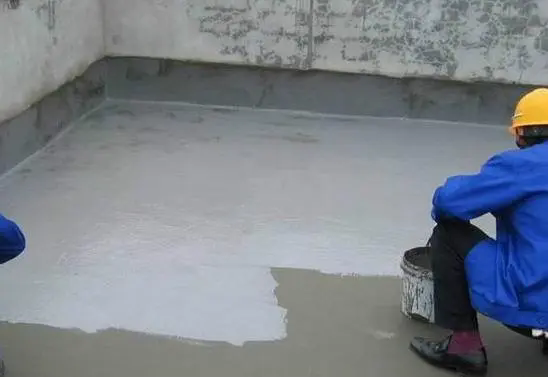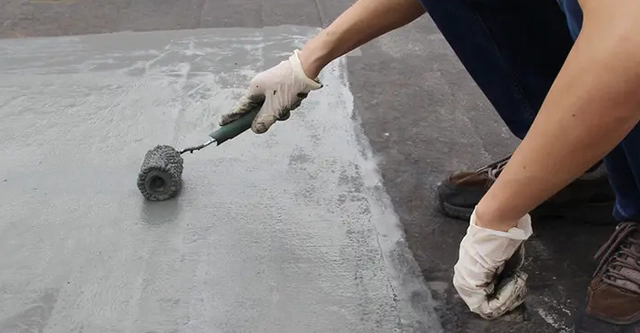Yapısal Bütünlüğü Güçlendirme
Tuğla Birimler Arasındaki Bağlama Mekanizması
Binaların dayanım ve kararlılığını artırmada öncelikli öneme sahip olan yapışma davranışı, harçların bağlama performansıdır. Harç tuğla, taş ve yeni inşaat blokları gibi mozaik birimlerini bir arada tutan güçlü bir bağlayıcı madde olarak hizmet eder. Çimento ve kireç gibi bağlayıcı maddelerin varlığı, uzun süreli yapışmayı sağlamak için temel bir faktördür. Bu maddeler yapıyı dayanıklı kılmak için yapışmayı geliştirir. Harçta kullanılan kimyasal katkı maddeleri de bağlama mekanizmasını geliştirebilir. Araştırmaya göre, tensil dayanımı önemli ölçüde artırarak binaların özellikle sert koşullarda güçlü ve kararlı olmalarını sağlayabilir.
İnşaat, bu avantajlardan yararlanmak için birçok sabitleme yöntemini kullanır. Örneğin, ince ayarlama harçları, ağırlık aktarımı olmaksızın güvenli bir bağlama ihtiyacı olan uygulamalar için uygundur. Bunun karşıtı olarak, geleneksel kalın tabanlı harçlar, yükleme taşıyan binalar için daha iyi stabilite sunar. İki yöntemin verimliliği, farklı inşaat bağlamları arasında güçlü bir şekilde değişir. Bu teknikleri kullanarak mimarlar ve mühendisler, farklı ortamlarda yapısal dayanıklılığın geliştirilmesi için optimal bağlama stratejisi geliştirebilirler.
Yüzeyler Arası Yük Dağılımı
Harç, yükü duvarlara ve diğer taşıyıcı elemanlara yaymak açısından önemlidir; yalnızca stabiliteyi sağlamakla kalmaz, aynı zamanda bir binanın kullanım ömrünü de uzatır. Harç, boşlukları doldurur ve yüklerin eşit şekilde yayılmasını sağlamak için sürekli bir dayanıklılık düzlemi oluşturur. Bu da yapısal başarısızlığa yol açabilecek potansiyel gerilme bölgelerini en aza indirger. Mühendislik raporlarında, yüksek kaliteli harçla yapılan binaların, düşük dayanıklılığa sahip malzemeyle inşa edilenlere kıyasla yük altındaki performanslarının çok daha iyi olduğu belirtilmiştir.
Harçın yükleme taşıma özelliği, yapı temelinin veya üst yapının hasar görmesine neden olabilecek herhangi bir basınç noktasının oluşmasını engeller. Bazı binalarda, yüksek ve değişken yüklere kararlı olabilen harç kalitesi kritik olabilir. Örneğin, zemin yükleri geniş ölçüde dalgalanan ticari yapılar gibi, harç duvarlara ve zemine yükleri eşit olarak dağıtmak için destekler. Bu da yapıların yükleme taşıma kapasitesini ve dayanıklılığını artırır ve harç bu nedenle dayanıklı inşaatın vazgeçilmez bir bileşeni haline gelmiştir.
Takviye Edilmiş Uygulamalarda Deprem Dayanımı
Harç, deprem bölgelerinde güvenli yapı yapımında önemli olan deprem dayanımı konusundaki iyileşmeye katkı sağlar. Harç'ın özel özellikleri, yapıların deprem güçlerini dağıtmaya ve bir deprem olayının enerjisini emmeye yetenekleri konusunda anahtar rol oynar; yapı çökmesi önlenirse. Deprem sonrası çalışmalarından elde edilen bilgiler, harçlı blokten yapılan yapıların, harçsiz yapılanlara göre deprem yükleme altında daha iyi performans gösterdiğini göstermiştir.
Harç'ın esnekliği ve dayanıklılığı, silindirlerin bileşimleriyle hesaplananlara benzer şekilde davrandı. (Yeni) Bu özellikler sayesinde şu anda hem binayı hem de binanın kullanıcılarını koruyor, bina dinamik güçlere veya depreme karşı daha dirençli hale getirerek. Bu özelliklerin tanınıp kullanılmasıyla, doğal afetler sırasında binayı mümkün olduğunca güvenli ve sağlam kılmak için deprem güçlerine karşı yapı performansı büyük ölçüde artırılabilir.
Ses Yalıtımı Özellikleri
Yoğunluk Üzerinden Gürültü Azaltma
Çimento ağırlığı, konut ve ticari uygulamalar için ses izolasyonu performansı açısından kritik öneme sahiptir. Ağır çimento harikulade gürültü azaltma özelliklerine sahip olup, bu da onu gürültülü şehir bölgelerindeki binaların inşası için popüler bir seçeneğe dönüştürür. Ses araştırmalarında iddia edildiği gibi, daha yoğun çimento frekansları daha verimli bir şekilde emer ve bu nedenle ses azaltma açısından üstün bir performans sunar. Bu durum, gürültü kirliliğinin yaşam kalitesi üzerinde büyük bir etkisi olan şehirlerde daha da önem kazanmaktadır. Pratik anlamda, yoğun çimento duvarlarınızda gürültü azaltma eklemek için dışarıdan gelen gürültü iletimini azaltarak kullanılabilir.
Duvarlardaki Etki Ses Damping
Pasta, bina içindeki etki seslerini, yankıları ve titreşimi bastırmada oldukça etkilidir. Ses testleri, üst kalite pastadan yapılmış duvarların ses izolasyonuna önemli bir katkı sağlayabileceğini göstermiştir; özellikle birden fazla katlı binalarda ayak seslerinin rahatsız edici olabileceği durumlarda. Pasta seçildiğinde yapının özel akustik gereksinimleri göz önünde bulundurulmalıdır. Kalınlaştırıcı pasta seçilmesinin oda içindeki sesleri bastırmaya yardımcı olacağı ve mükemmel bir ses emme etkisi sağlayacağı gerçeğiyle, ses aktarımı büyük ölçüde azalır ve daha rahat çalışabilirsiniz vb.
Termal Etkinlik Avantajları
Kireç Çamur Sistemlerinde Isı Tutma
Çamur sistemleri, ısıtma kütlesini yüksek düzeyde koruma kapasiteleri nedeniyle de tanınır, bu da ısıyı tutturmayı sağlayabilir ve önemli enerji tasarrufuna yol açabilir. Isı depolama prensibine göre çalışırlar ve yavaş bir şekilde salıvererek, dış koşullardan bağımsız olarak iç sıcaklığı sabit tutarlar. Araştırmalar, çamur ile yapılmış binaların, geleneksel yapı malzemelerine kıyasla önemli miktarda enerji tasarrufu sağlayabileceğini göstermiştir. Örneğin, çamur binalarının daha yüksek termal kütle özelliklerinden kaynaklanan azaltılmış ısıtma ve soğutma maliyetleri gözlemlenmiştir, bu da zamanla enerji kullanımında önemli bir azalmaya yardımcı olur. Ayrıca, çamur, yeşil bina için yeşil bir çözümdür. Çamur, çoğunlukla benzeri malzemelerden daha düşük karbon ayak izine sahip ve üstün yalıtım özellikleriyle zaman içinde enerji kullanımı üzerinde önemli bir azalma sağladığı için test edilmiş, baştan sona sertifikalı bir yeşil üründür.

Isı Kütlesi Yönetimi ile Enerji Tasarruzu
Şamandıranın termal kütlesi, iklimatik olarak kontrol edilen bölgelerde bir binanın enerji tasarrufuna katkıda bulunan ana faktörlerden biridir. Şamandıra binaları, ışık binalardan daha fazla termal kütleye sahiptir, bu da onların gün boyunca ısıyı emmelerini ve geceleyin salmalarını sağlar, böylece daha sabit ve dengeli bir sıcaklık sağlar. Termal kütleyi bina tasarımına tanıtmak üzere alınan yaklaşıma göre, tarih, ısıtma ve soğutma maliyetlerinin daha düşük olabileceğini göstermektedir. Örneğin, bina zarfında termal kütle kullanımı, soğutma için enerji talebinde %30'a kadar azalmaya bağlı olmuştur. Ayrıca, mucitler, yapısal açıdan daha az etkilenen yeni şamandıra bileşimleri geliştirmiştir ki bu bileşime termal düzenlemeyi sağlar. Bu şamandıra teknolojisi iyileştirmeleri, sadece enerji tasarrufuna katkıda bulunurken, sürdürülebilir ve verimli bina isteklerini karşılamak için de yaygınlaştırılır.
Nem Yönetimi ve Kuvvetli Karşı Direnç
Geleneksel Çile Karışımında Nefeslenebilirlik
Geleneksel çilek moörtarları, nem kontrolü açısından çok önemli olan "solunum kabiliyeti" ile bilinir. Geleneksel Çilek Moörtarı, hidrolik moörtarlar gibi nemi kilitlemez; çünkü nem onun içinden geçmek zorundadır ve bu da iç nem ve nem kondensasyonunu dengelemeye yardımcı olur. Koruma uzmanları, nem nedeniyle mantar ve bozulmadan korunma konusunda ne kadar iyi olduğunu övgüyle anar. Solunur Çilek Karışımalar Tarihi binalar için yaygın bir kurutma sorunu, solunursuz çilek karışımların kullanımı yoluyla ortaya çıkar; ancak Avrupa'daki birçok Romantik veya Gotik tarzı binalar, karışık çilek ve diğer malzemelerle bütünlüklarını korumuştur.
Nem Kontrolü için Modern Eklentiler
Özel karışım maddelerinin daha yeni geliştirmeleri, harç karışımlarının nem düzenleyici potansiyelini büyük ölçüde artırmıştır. Bu eklemeler polimer veya çimento tabanlı olabilir ve harçların suyu uzaklaşmasını sağlarken buharın kaçmasına izin verir. Bilim, mantar büyümeyi en aza indirme yeteneklerini ve evinizin ömrünü uzatma kabiliyetlerini doğrulamaktadır. Nem yönetimi konuları önemli olan yapı projesi için, rehberler çevreye uygun ve iş yerinin benzersiz zorluklarına uyum gösteren eklemelerin kullanılmasını önermektedir. Bu teknik hem mantar direncini artırır hem de geleneksel kireç harçlarının orijinal özelliklerini korurken modern formlarla performansını geliştirir.
Estetik Çözümler İçin Uyumluluk
Çimento Mortarlarındaki Renk Özelleştirme
İnşaat mimarlık tasarımlarında çimento harçlarının rengini ayarlamak çok önemlidir. Bu, mimarlara ve tasarımcılara belirli tasarım stilleri ve müşteri gereksinimlerine uygun görsel olarak ilgi çekici binalar tasarlamaları şansı sunar. Örneğin, kentsel yüksek katlı yapılar gibi yeni inşalar genellikle modern ve sanatsal bir his yaratmak isteyen özel renkli harçları içerir. Bu özel tasarlar sadece binaya görsel ilgi eklemekle kalmaz, aynı zamanda binanın hikayesini de anlatır. Renk bazları genellikle istenen renk etkilerini elde etmek için özel katkı maddeleriyle, mesela demir oksit boyalarıyla, tamamlanır. Bu katkı maddeleri sadece renkli çözümler sunmakla kalmaz, aynı zamanda hava koşullarından etkilenmeden harçların performansını korumaya da çalışır. Çimento harçlarının renk tasarımı, modern inşaatte estetik nedenlerle birlikte teknik nedenlerden dolayı da vazgeçilmezdir.
Tarihî Geri Dönüşüm Özel Karışım Kullanılarak
Özel moörtarlar, aslilik o faktörün anahtarı olduğu için tarihi yenileme projelerinde kritik öneme sahiptir. Bu moörtarlar, binanın orijinal yapım malzemelerinin doğal özelliklerini taklit etmek üzere tasarlanır, böylece yeni tuğla işi orijinalle birleşir. Wisegeart, bunların karışımını kullanmanın kritik olduğunu açıklıyor çünkü bu, bir binanın şekli (veya tarihi doğruluğu) doğru olmasına olanak tanır. Klasik bir uygulama, özel formulasyonlu çamur moörtarlarının eski Avrupa katedrallerinin orijinal görünümlerini korumak için kullanılması ve aynı zamanda daha fazla bozulmayı önlemektir. İyi restorasyonlar, şehir mirası restorasyonları gibi, belirli moörtar karışımlarının gelecek için tarihi mimarıyı korumada nasıl rol oynadığını gösterir.
SSS Bölümü
Bina gücünün artışı bağlayıcı maddede ne kadar önemli bir yere sahiptir? Bağlayıcı maddeler, tuğla ve taş gibi mozaik birimleri arasında güçlü bir bağ sağlayarak yapılara istikrar kazandırır. Çimento ve kireç bağlayıcı ajanları aracılığıyla yapışkanlığı artırır ve böylece yapıyı birarada tutar.
Fırça binalarda yükleme dağılımına nasıl katkıda bulunur?
Fırça, örgü birimleri arasındaki boşlukları doldurarak yüklere yapısal yüzeyler boyunca daha dengeli bir şekilde yayılmasını sağlar. Bu, strese odaklanmayı azaltır ve temel veya üst yapıyı tehlikeye atan basınç noktalarını önler.
Fırça bir binanın deprem direncini geliştirebilir mi?
Evet, özellikle polimerler veya lifler içeren özel formulasyonlu fırça, yapıların deprem enerjisini emmesine ve etkili bir şekilde dağıtmalarına olanak tanıyarak depremler sırasında felaketsel çöküş riskini azaltır.
Fırçanın yoğunluğu akustik yalıtım üzerinde nasıl etki eder?
Şamponun yoğunluğu, ses dalgalarını emerek akustik yalıtımı geliştirir ve binalardaki gürültü sızıntısını önemli ölçüde azaltır; bu özellikle gürültülü kentsel ortamlarda faydalıdır.
Çökel şamponun termal verimlilik avantajları nelerdir?
Çökel şamponun termal kütle özelliklerini artırır, ısıyı tutturmasına yardımcı olur ve sabit iç mekan sıcaklıkları koruyarak enerji verimliliğini artırdığından, binalarda önemli enerji tasarruflarına yol açabilir.
Modern katkı maddeleri nasıl şamponun nem kontrol yeteneklerini artırır?
Modern katkı maddeleri, genellikle polimer tabanlı olanlar, suyu uzaklaştırmak ve buhar geçirgenliğini korumak suretiyle nem kontrolünü artırır, böylece mantar büyümelerini azaltır ve yapısal dayanımı sağlar.
Çimento şamplarında renk özelleştirilmesi mümkün müdür?
Evet, çimento şamplarında renk özelleştirilmesi, demir oksit boyalar gibi belirli katkı maddeleri kullanılarak mümkündür; bu sayede mimarlar tasarım temalarıyla uyumlu görsel olarak çekici yapılar oluşturabilirler.
Uzmanlaşmış şamponlar tarihi-restorasyonda nasıl kullanılır?
Özel harçlar, tarihi yapıların orijinal malzeme özelliklerine uygun düşürülerek, restorasyonların seemböl bir şekilde bütünleşmesini sağlayarak binaların yapısal bütünlüğünü ve görsel asliliklerini korur.
İçindekiler
-
Yapısal Bütünlüğü Güçlendirme
- Tuğla Birimler Arasındaki Bağlama Mekanizması
- Yüzeyler Arası Yük Dağılımı
- Takviye Edilmiş Uygulamalarda Deprem Dayanımı
- Ses Yalıtımı Özellikleri
- Yoğunluk Üzerinden Gürültü Azaltma
- Duvarlardaki Etki Ses Damping
- Termal Etkinlik Avantajları
- Kireç Çamur Sistemlerinde Isı Tutma
- Isı Kütlesi Yönetimi ile Enerji Tasarruzu
- Nem Yönetimi ve Kuvvetli Karşı Direnç
- Geleneksel Çile Karışımında Nefeslenebilirlik
- Nem Kontrolü için Modern Eklentiler
- Estetik Çözümler İçin Uyumluluk
- Çimento Mortarlarındaki Renk Özelleştirme
- Tarihî Geri Dönüşüm Özel Karışım Kullanılarak
- SSS Bölümü

